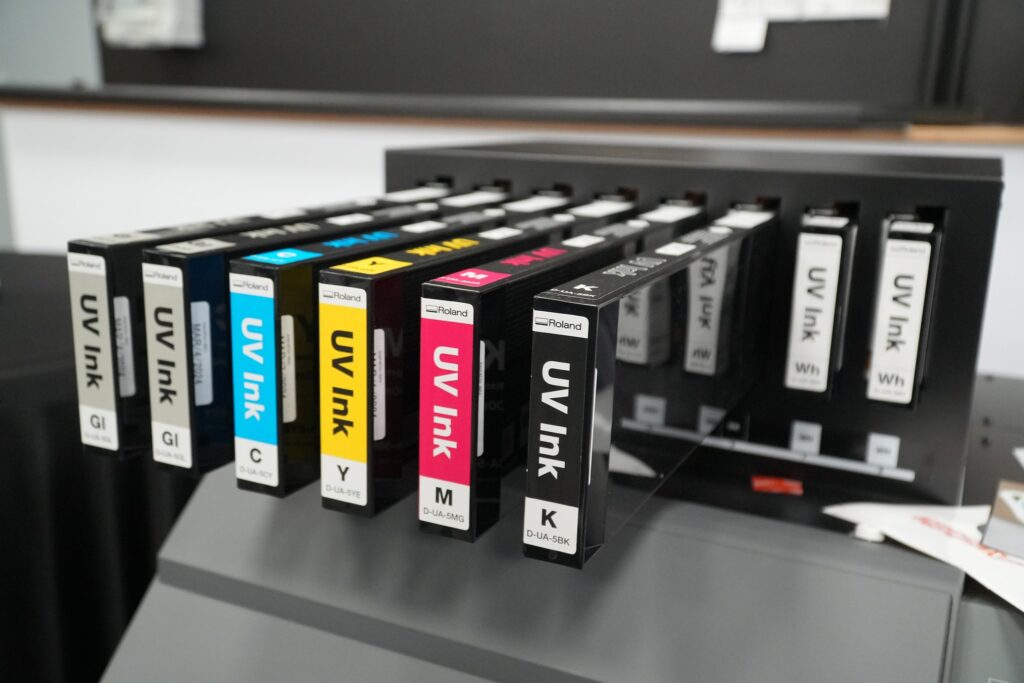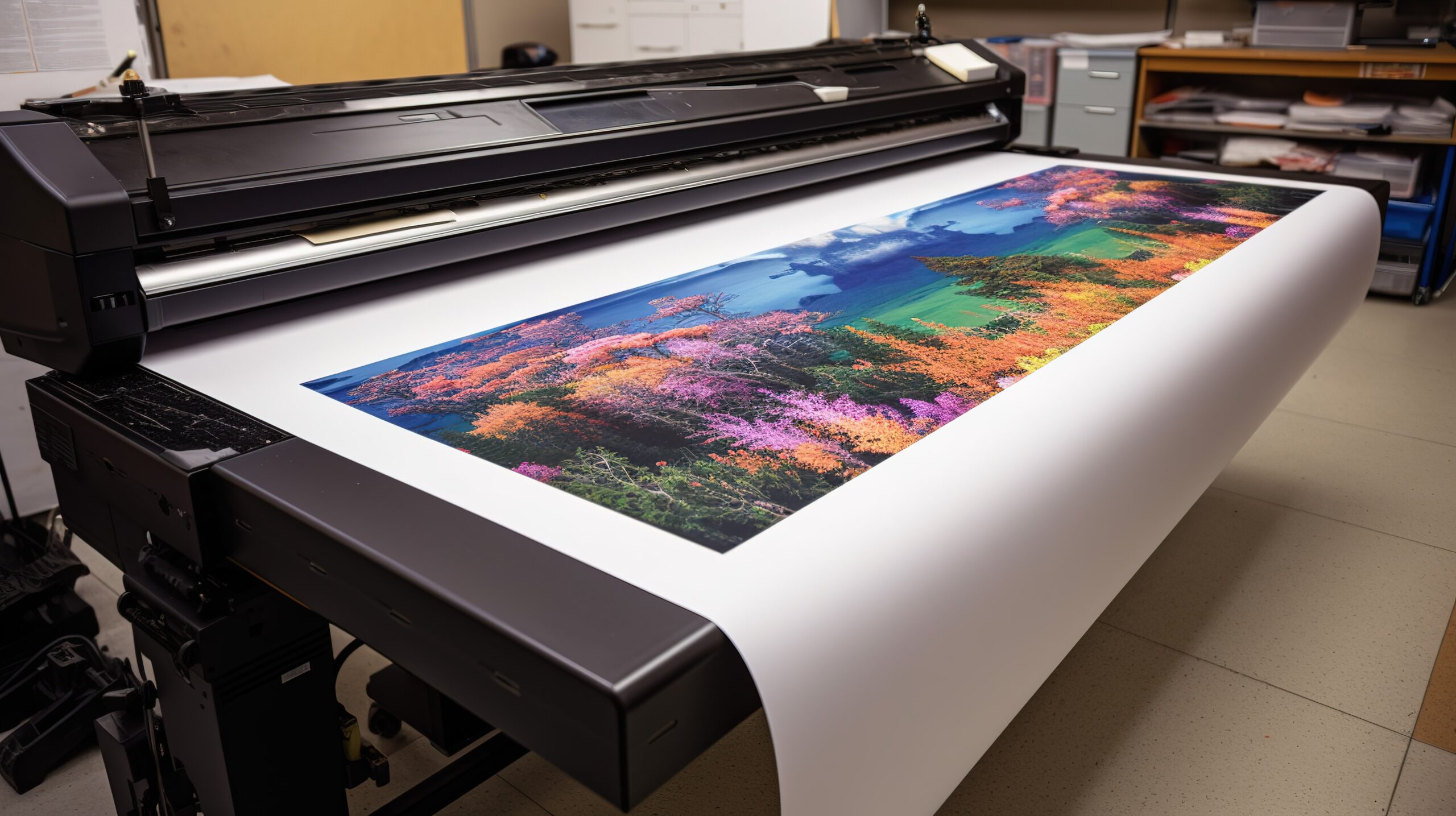
Printing 101: Different Types of Printer’ Inks for Large-Format Printing
In the dynamic world of large-format printing, where vivid visuals and expansive displays capture attention and communicate messages effectively, understanding the various types of printer inks is paramount. Large-format printing is the backbone of advertising, architecture, interior design, and various other industries, offering the means to create eye-catching banners, stunning wall murals, durable vehicle wraps, and more. However, the choice of ink plays a pivotal role in achieving the desired results. Different ink types, such as solvent-based, latex, UV-curable, and pigment-based inks, offer unique advantages and applications. In this article, we delve into the significance of knowing these ink varieties, exploring how the right choice can make all the difference in the world of large-format printing, ensuring that your visuals not only capture attention but also endure the test of time.
What is Large-Format Printing?
Large format printing is a specialized printing process designed for producing oversized graphics and visuals on a wide range of materials, including banners, posters, vehicle wraps, wall murals, and more. Unlike traditional desktop printers, large format printers employ a combination of inks, often including pigment-based or solvent-based inks, to ensure vibrant, durable, and high-resolution prints that can withstand outdoor exposure and retain their quality over time. This technology is essential for businesses, advertising agencies, and industries requiring eye-catching, large-scale visual displays, making it a crucial tool for effective marketing and communication.
How Large-Format Printing Works?
Large-format printing operates by utilizing specialized printers, famous of which are Roland DG printers, equipped with wide print heads to produce oversized graphics on various materials. The process typically involves a combination of inks, including solvent-based, latex, UV-curable, or pigment-based inks, which are sprayed onto the chosen substrate. These inks are meticulously deposited onto the material’s surface, creating high-quality, full-colour prints that are vivid and resistant to fading. Large-format printers are designed to handle expansive print areas, and they can reproduce intricate designs with exceptional precision. This technology is widely employed in industries such as advertising, signage, architecture, and interior design, enabling the creation of captivating visual displays on a large scale.
Types of Printer Inks
- Solvent Inks
It is called “solvent ink” because it contains volatile organic compounds (VOCs) or chemical solvents as part of its composition.
Solvent inks are capable of dissolving pigments effectively, resulting in vibrant and durable prints. The solvent carries the colour pigments onto the printing surface.
Solvent inks are designed to adhere well to a variety of materials, including vinyl, banner materials, and other substrates used in outdoor signage and advertising.
One of the primary advantages of solvent ink is its durability. Printed materials using solvent ink are resistant to fading, water, UV exposure, and general wear and tear, making them suitable for long-term outdoor use.Ideal for: outdoor signage, billboards, vehicle wraps, curtain sides and mesh
- Eco-Solvent Inks
These inks are designed to be more environmentally friendly compared to traditional solvent inks, primarily because they have reduced levels of volatile organic compounds (VOCs) and hazardous air pollutants (HAPs). With reduced VOCs, eco-solvent inks are generally considered safer for both the environment and the operators working with them.
Eco-solvent inks still offer good durability and resistance to environmental factors like UV exposure and moisture, making them suitable for both indoor and outdoor applications.
They adhere well to a variety of materials, including vinyl, banner materials, canvas, and more.Ideal for: polypropylene, indoor and outdoor displays, mesh, vehicle wraps, billboards, self-adhesive vinyl, and Point of Purchase (POP) displays
- Aqueous Inks – Dye Ink
A type of ink commonly used in inkjet printing technology. These inks consist of colourants dissolved in water, which gives them their name “aqueous” (meaning water-based).
These inks generally dry quickly on paper, which helps prevent smudging and allows for faster print production.
Dye-based aqueous inks are known for their vibrant and vivid colour output. They can produce sharp and detailed prints, making them suitable for applications where image quality is critical.
One limitation of dye-based aqueous inks is their susceptibility to water damage. Prints made with these inks may smudge or fade when exposed to moisture.
They are primarily designed for indoor use due to their limited resistance to UV light and moisture.Ideal for: posters, banners, trade show displays, treated canvas, and other paper media where non-toxicity is important
- Aqueous Inks – Pigment Ink
Another type of ink commonly used in inkjet printing technology. Unlike dye-based aqueous inks, pigment-based aqueous inks contain tiny solid particles (pigments) suspended in a water-based solution. These pigments are more durable and resistant to environmental factors compared to dye inks.
Pigment-based aqueous inks are known for their superior durability and resistance to fading, UV light, and moisture. Prints made with these inks can last for many years without significant degradation.
Pigment inks are highly water-resistant, making them suitable for outdoor applications and situations where prints may come into contact with moisture.
Prints made with pigment-based inks exhibit excellent resistance to fading, which is important for long-lasting, archival-quality prints.Ideal for: Outdoor displays, fine art printing, photography, signage.
- UV Curable Inks
Known for their rapid curing properties through exposure to ultraviolet (UV) light. These inks contain special photoinitiators that react to UV light, causing them to solidify almost instantly upon exposure.
UV-curable inks can be used on a wide range of substrates, including paper, plastics, glass, metal, wood, and more.
Prints created with UV-curable inks are highly durable and resistant to fading, scratching, and moisture.
They can produce vibrant and sharp colours, making them ideal for applications where colour quality is crucial.
UV-curable inks typically have lower levels of volatile organic compounds (VOCs), making them a more environmentally friendly option compared to some solvent-based inks.Ideal for: rigid media and non-absorbent material including glass, wood, metal and vinyl materials.
- Latex Inks
Water-based inks that contain very low levels of volatile organic compounds (VOCs). They are considered eco-friendly compared to solvent-based inks and do not produce strong odours or harmful emissions. Latex inks are non-toxic, non-flammable, and non-combustible.
Latex prints are highly durable and resistant to water, UV exposure, and scratching, making them suitable for both indoor and outdoor applications.
Latex inks dry quickly, which enables efficient and faster print production.
Latex inks can produce vivid and vibrant colours, making them suitable for applications like signage, banners, vehicle wraps, and fine art reproductions.Ideal for: custom wallpaper projects, vinyl banners and posters, and see-through vinyl.
- Textile Inks
Also known as fabric inks or textile printing inks, are specialized inks used in the process of printing on textiles.
These inks are designed to adhere to fabric surfaces, creating durable and vibrant prints that can withstand wear, washing, and exposure to various environmental conditions.
Commonly used in textile printing techniques such as screen printing, direct-to-garment (DTG) printing, and dye-sublimation printing.
The choice of textile ink depends on the specific printing method, the type of fabric, and the desired outcome, as different inks are formulated for various textiles and applications.Ideal for: clothing printing, home textiles, accessories, promotional products, fabric art, the textile industry, sportswear, fashion design, and various DIY and craft projects.
The significance of selecting the right type of ink cannot be overstated. Each ink variety, whether solvent-based, latex, UV-curable, or pigment-based, brings its own unique advantages and applications to the table. From dazzling outdoor banners to fine art reproductions and vehicle wraps built to withstand the elements, the choice of ink is a pivotal factor in achieving the desired results. As technology advances and industries evolve, understanding these ink options becomes not just an advantage, but a necessity for businesses and creative professionals alike. So, whether you’re crafting stunning visuals, designing impactful signage, or creating lasting impressions, knowing your ink is the key to making your large-format printing endeavours shine in both quality and durability.
Are you in search of a dependable printer ink supplier to fuel your wide-format printing business’s success? Contact us today to discover how our range of premium printer inks can elevate your printing endeavours. We’re committed to delivering not just products, but solutions tailored to your unique needs. Let’s embark on a journey to enhance your printing capabilities, impress your clients, and drive your business forward.










